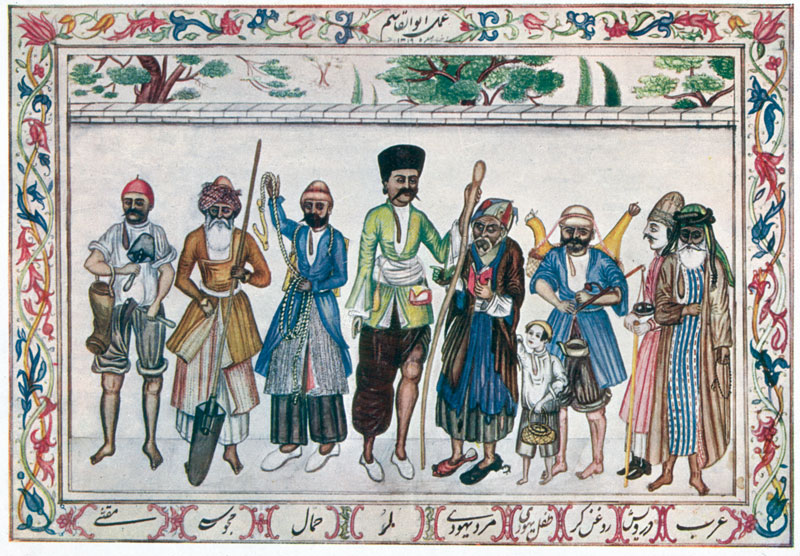Illuminating the History of Iranian Jews
By Diane M. Bolz
Jews have lived in Persia, now Iran, for nearly three millennia. The first Jewish community dates back to the early 6th century BCE, when the Babylonians conquered the Kingdom of Judea and exiled many of its inhabitants. Fifty years later, King Cyrus the Great conquered Babylon and granted religious freedom to the Jews in his kingdom. Over the centuries, Persian Jews survived a succession of upheavals—the Arab-Muslim conquest in the 7th century CE, the Mongol invasion in the 13th century and the establishment of Shiite Islam as the state religion in the 16th century, resulting in restrictive laws and harsh conditions for Jews and other religious minorities. Along with these times of marginalization, exclusion and persecution, the Jews also experienced periods of coexistence and integration. Through it all, they managed to maintain a strong sense of communal identity and a vibrant cultural tradition, which was influenced and enriched by their surroundings
Now a special exhibition, “Light and Shadows: The Story of Iranian Jews,” on view at the Yeshiva University Museum in New York City, provides insight into the fascinating history of one of the world’s oldest Jewish communities. The show features more than 100 objects that document the life of Iran’s Jewish community from ancient times to the present—archaeological artifacts, illuminated manuscripts, amulets, musical instruments, textiles, paintings and photographs. Highlights include an early 20th-century wall carpet bearing symbols of the Twelve Tribes of Israel; clay tablets from the 6th century BCE recording agricultural and commercial activities; and a reproduction of a letter written in the 8th century CE by a merchant in Judeo-Persian—a Persian dialect rendered in Hebrew letters and used by Jews over a period of more than a millennium—that provides evidence that there were Persian-speaking Jews in the region of present-day Afghanistan and Central Asia.
Along with times of marginalization, exclusion and persecution, persian Jews experienced periods of coexistence and integration. Through it all, they managed to maintain a strong sense of communal identity and a vibrant cultural tradition, influenced and enriched by their surroundings.
An illustrated manuscript with a series of blessings known as Tnu Shira (unique to Persian Jewish tradition) praises God for the divine salvation offered to the Jews on the holiday of Purim. The biblical book of Esther—the beautiful young Jewish woman who became the queen of King Ahasuerus and risked her life to thwart a plot to exterminate the Jews—has held special significance for Persian Jews and played an important role in shaping their identity.
One of the masterpieces of Jewish art included in the exhibition is a pair of painted doors [detail right] that bear floral motifs and images of pairs of lovers, one of the favorite subjects of Persian miniature painters. Likely dating to the 19th century, the doors are inscribed with a love poem in Judeo-Persian that reads in part: “He opened the gate and stepped into Paradise/And saw the beautiful women there/He stood like a thirsty man by fresh water/Filled with longing as though in a dream.” The size of the doors indicates that they probably enclosed a niche, a typical kind of storage space in Iran.
The establishment of the more restrictive Shiite Muslim regime in the early 16th century had a profound impact on Persian Jews. According to Shiite doctrine, Jews and other non-Shiite minorities were considered ritually impure, and any physical contact with them or with materials they touched was to be shunned. This meant that Iranian Jews could no longer pursue their traditional professions. Instead they were forced to turn to occupations forbidden to the Shiite population, including becoming musicians and entertainers. As a result, Jews played a key role in preserving the legacy of classical Persian music and poetry.
In most cities, Jews were restricted to a Jewish quarter called the mahale. Although the mahale provided a sense of protection, Shiite discriminatory laws made daily life difficult. At times, Jews were not allowed out of their homes on rainy days for fear that their impurity would be transmitted via the rainwater. Another law prohibited Jews from wearing matching shoes. This law remained in effect in certain cities until the last quarter of the 19th century. An illustration [left] by the painter Abu El-Qasem, reproduced in the 1905 book Five Years in a Persian Town, graphically depicts this humiliating restriction.
In the mid-1800s, the Jews living in the city of Mashhad were forced to convert to Islam. But though they practiced Islam in public, members of the community maintained Jewish customs in private. A section of the show focuses on this community and includes elaborate garments for child brides, who were betrothed at an early age to avoid marriages to Muslims later in life, and pairs of beautifully illuminated marriage contracts—a Jewish version in Hebrew and a Muslim version in Persian.
In the late 19th and early 20th centuries, conditions gradually improved for Jews in Iran, but that situation came to an abrupt end with the 1979 Iranian Revolution. The resulting re-establishment of the Islamic State persuaded most of the country’s Jews to emigrate. Today some 25,000 Jews remain in Iran, and though they are still considered second-class citizens, they continue to preserve Jewish traditions developed and honed over the course of centuries.
Created and organized by Beit Hatfutsot, the Museum of the Jewish People in Tel Aviv, Israel, “Light and Shadows” is being presented by the Yeshiva University Museum and the Center for Jewish History, 15 West 16th Street, through April 27.
—Diane M. Bolz

